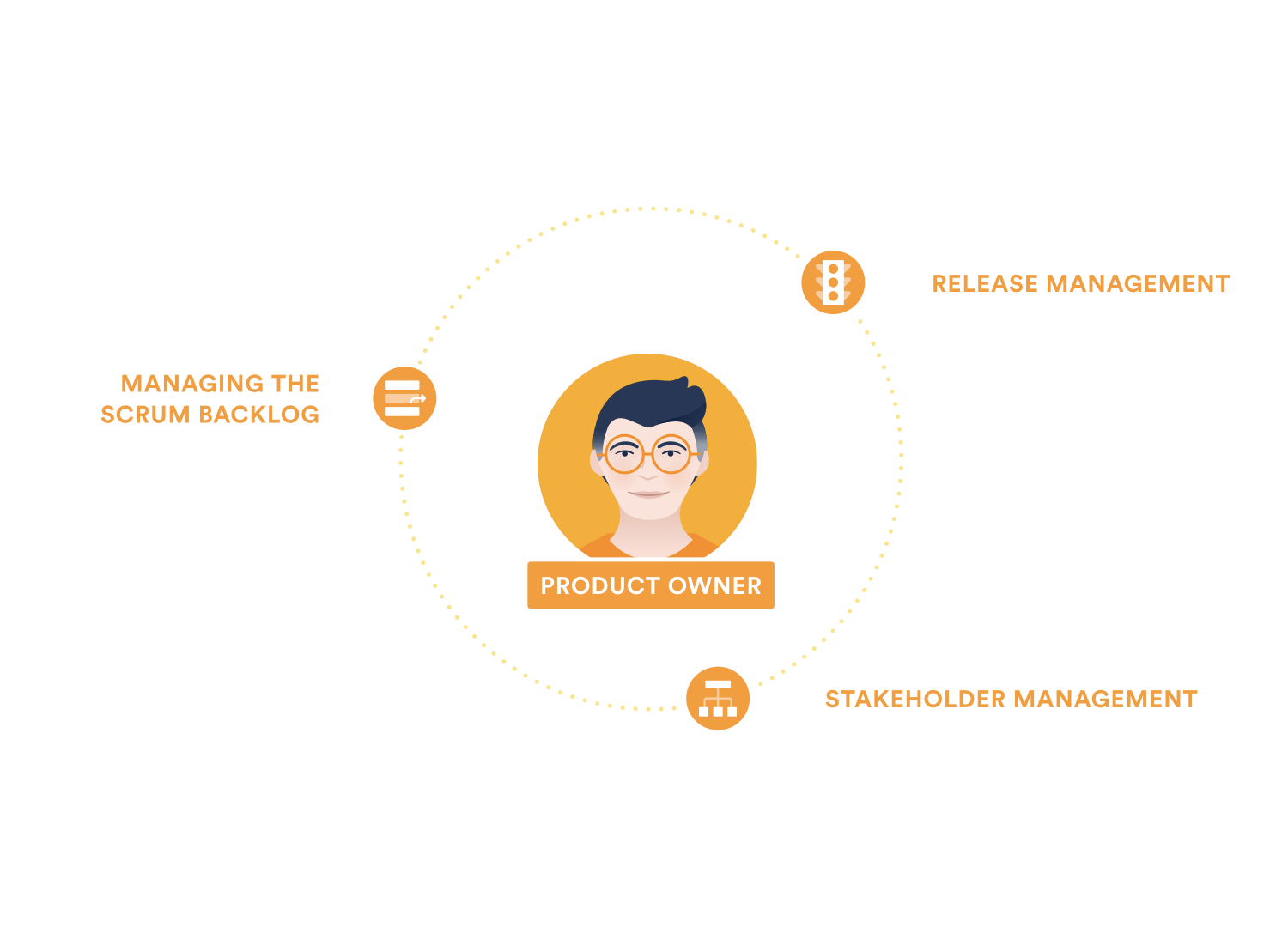Scrum Roles
Each agile scrum role has their own expertise and responsibilities. Understanding how these cross-functional roles work together by leveraging their strengths and embracing flexibility leads to better outcomes in iteratively delivering value.

On an agile software development team, collaboration between cross-functional roles is crucial to delivering high-quality increments of work. While each role has their own expertise and responsibilities, it is the symbiotic relationships between roles that enable the agile process to thrive.
This guide will provide an overview of the primary agile roles and why understanding these roles is key to agile team success.
We'll cover how the Scrum Master, Product Owner, and Development Team work together in the scrum framework. Additionally, we'll discuss some other common agile roles like the Project Manager, Business Analyst, and UX Designer. Understanding responsibilities and collaboration between roles is key to agile success.
Key Takeaways
- The Scrum Master facilitates the agile process by coaching the team, removing obstacles, and enabling self-organization. Their leadership helps the Development Team stay focused and productive.
- The Product Owner connects stakeholders to the agile Development Team by prioritizing and managing the backlog based on business needs and customer feedback.
- Frequent collaboration between cross-functional roles is crucial on agile teams. Leveraging the strengths of each role while embracing flexibility leads to better outcomes.
Scrum Roles
Agile is a lightweight project management framework centered around iteration, collaboration, and welcoming change. Agile teams are cross-functional, meaning they contain a mix of roles like developers, testers, designers, etc.
These teams are also self-organizing, taking responsibility for deciding how best to complete their work. Different roles work closely together to deliver small increments of work in short cycles called sprints.
Scrum Master

The Scrum Master is the facilitator for the agile scrum process. They coach team members on scrum practices, promote adherence to agile values, and remove any obstacles hindering the Development Team. A core duty is nurturing an environment that empowers the Development Team to be productive and creative. The Scrum Master also manages interactions with stakeholders, communicating progress and mitigating issues.
Product Owner

Representing the customer's interests, the Product Owner is responsible for managing and prioritizing the backlog of work needing completion. Using feedback from stakeholders and their own expertise, the Product Owner orders backlog items to best achieve business outcomes. During sprint reviews, the Product Owner accepts or rejects the work the Development Team has completed.
Development Team
Finally, the Development Team is a cross-functional group that does the actual hands-on work of designing, building, and testing product increments. They are mutually accountable for meeting the sprint goal and producing high-quality work. The Development Team is self-organizing, collaboratively selecting how they'll accomplish tasks in the sprint backlog.
Additional Agile Roles
While not mandatory scrum roles, agile teams may also include Project Managers, Business Analysts, and UX Designers. The Project Manager coordinates team activities and resources while also communicating with stakeholders. Business Analysts bridge the Development Team and stakeholders by translating business needs into technical requirements. UX Designers create intuitive, user-friendly interfaces and collaborate on implementing designs.
Conclusion
In review, each agile role contributes specialized expertise, but it's the synergy between roles that enables agile to thrive. Open communication and flexibility allow agile team members to cooperate smoothly. There is no rigid formula, as roles may adjust depending on the project and team dynamics. Above all, agile is about embracing collaboration to iteratively deliver value.

